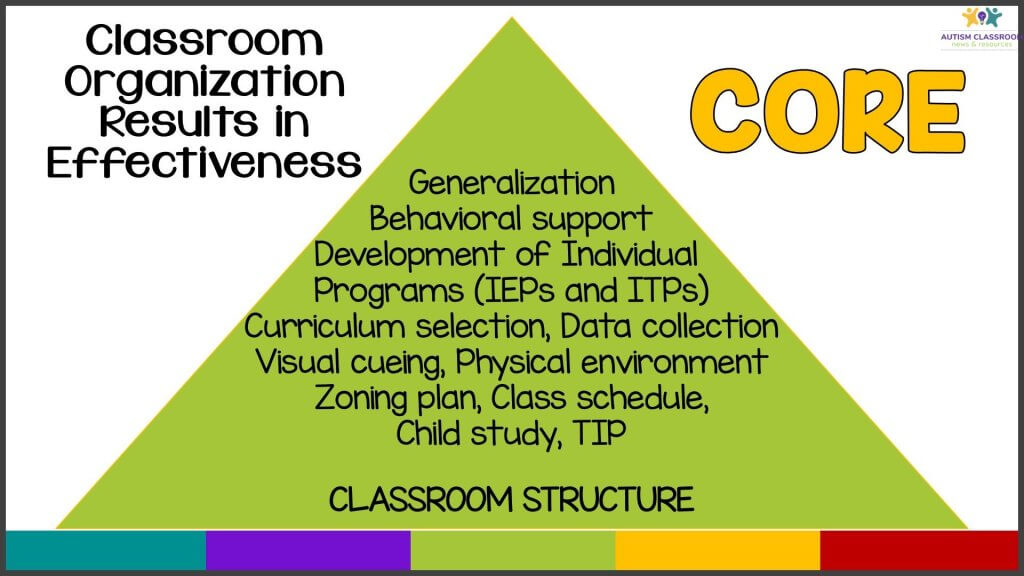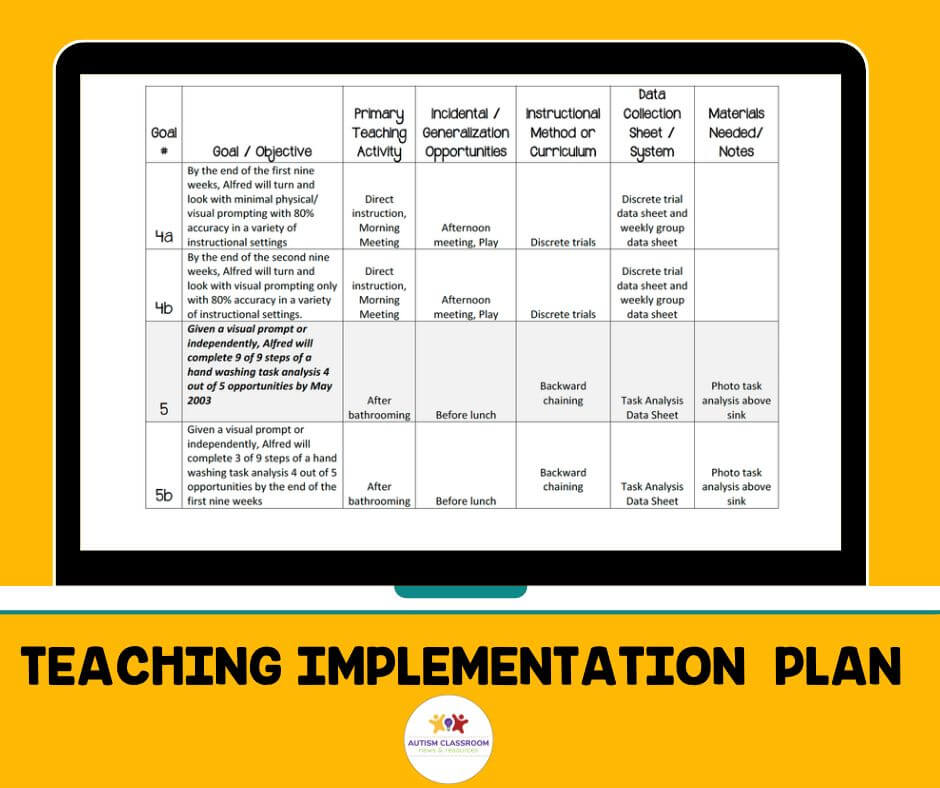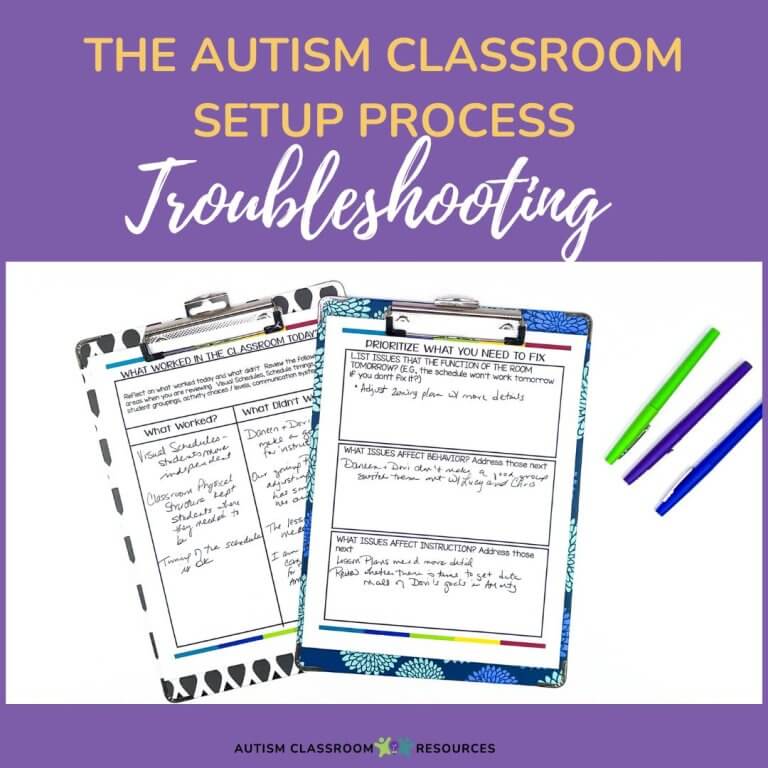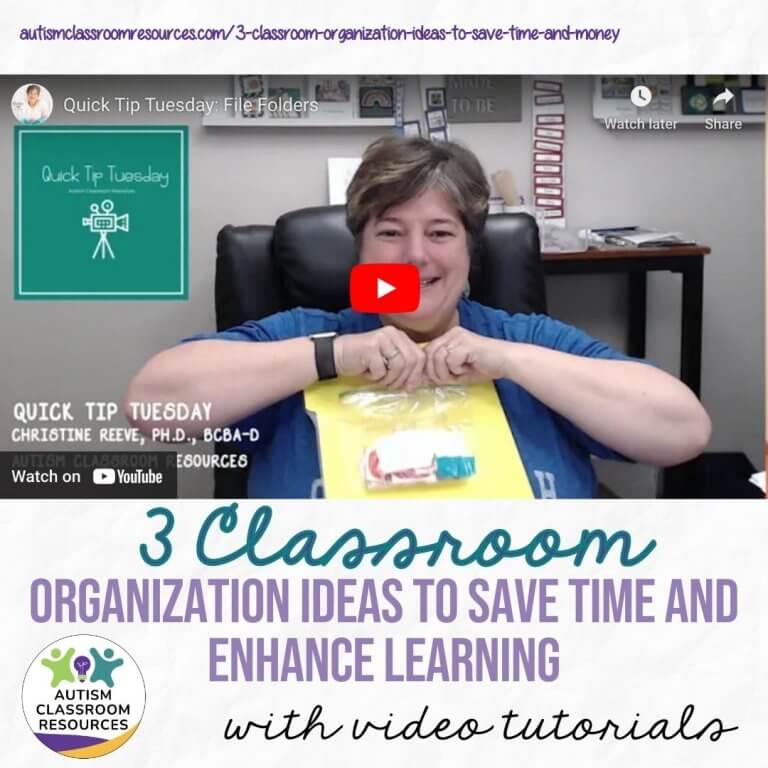Sharing is caring!
As you may remember, in the last few posts and podcasts, I’ve been talking about the special education Classroom Organization Results in Effectiveness (CORE) Framework. This is a set of systems that help you classroom run itself, allowing you to focus your attention back on teaching instead of managing.
In last week’s post, I talked all about what the CORE is and how it works. I’ve talked about how the CORE can help your classroom in this podcast as well. So, in this post, I thought I’d address some frequently asked questions about the CORE.
Why Use the CORE?
By focusing on the CORE, special education classroom teachers can create an environment where students feel safe, supported, and engaged. This will ultimately lead to improved student learning, behavior, and overall success.
And it can also help to save the teacher time, stress and frustration. And most important it allows the staff to get back to focusing on the students and teaching, rather than classroom management.

Is the CORE Only for Autism Classrooms?
Long story short–NO.
The CORE is the effective structure and routine at the center of very classroom in special education. And in slightly modified forms, it’s the center of every general education classroom. And it’s even relevant for college classes. What the supports at the center look like might be a bit different because they are always developed to match the individual needs of the present students,
Must You Start the Special Education Classroom CORE Strategies When the Year Begins?
It is useful to build the CORE at the beginning of the year. However, it is something that you can tweak and improve all throughout the year.
If you are a newer special ed. teacher you might start the strategies in small steps to avoid being overwhelmed. I promise it does get easier as you practice the strategies.
And if you are a preschool teacher or an early childhood person, then you have students coming to throughout the year. So you’re constantly tweaking your CORE in order to support the increasing needs in your caseload.
Once I Invest the Time to Develop the CORE, is it Finished?
When you start developing the CORE strategies (or designing the routines and structure you currently have to adopt the CORE Framework) you will still need to do some tweaking for a few weeks to get it to work smoothly. And if you add new staff or new students, it will need some touch ups.
But once the routine is moving fairly consistently, most of the elements stay pretty stable. Typically we tweak it for a few weeks at the beginning of the year. Then we move on to other parts of the system or settle deeper into our instruction.
Do I Have to Put All the Special Education Classroom Systems In Place at the Same Time?
No, you don’t need to put all the special education classroom systems in place simultaneously. And in fact, they build on each other at times so you can’t do one until another is complete. For instance, you can’t put up visual schedules until your classroom schedule is developed. And you can’t develop the zoning plan if you don’t know the schedule either.
I’m a newer special education teacher and my classroom is already overwhelming. How can I make the CORE more manageable?
Some of the beginnings of the CORE model are systems you are going to need to have in place in every special education classroom. For instance, you’ll need to have a consistent, routine classroom schedule developed. And your physical space will need to facilitate the implementation of the schedule and the teaching strategies being used.

But there some some tips for getting started that might be helpful.
- Instead of using the full Teaching Implementation Plan form and copying the IEP information into the form itself, print a copy of the IEP at a glance sheet from your IEP software (if you have one). Then write in the columns for each goal/objective of “Primary Teaching Activity,” “Teaching Method” and “Data Collection.”
- If you are just starting out in the special education classroom, you might start by doing 1 or 2 TIPs to get started. Then when things are running smoother, come back and finish others. The TIP is a great tool for communicating with staff as well as for planning out the classroom and instruction. But if it can be a lot to manage if you are just starting out. The more you do it, the faster it goes. Don’t let it intimidate you, though, and keep you from starting on the rest of the systems.
- Obviously you want to start with the CORE elements you need to run the classroom (i.e., schedule, physical space). But definitely go through the process of on TIP if you possibly can so you start to think about instruction for the classroom in that framework. It will also make it easier to make your schedule.
- Finally, put some elements on the back burner until your special education classroom is up and running with a routine. Data is one of these elements. You won’t have quality data until you get the classroom running and you can provide targeted instruction. So get the schedule, the physical space and the zoning plans running first. Then you can add in the data collection and other instructional components.
Can I Use the CORE if I’m NOT Teaching in a Self-Contained Special Education Classroom?
Yes, you can. I truly believe that the CORE is applicable to any classroom. The difference is the degree to which it’s needed. Most general education teachers have these systems in place in their classrooms. But they don’t have to think and plan as must for the individual explicit instruction. And they don’t have to manage as many staff. So their form of a zoning plan, for instance, might look different. I still think the TIP is a useful tool for special education students who are included for all or part of the day as well.
Hopefully that helps to reduce some of the barriers for implementing the CORE in a variety of classrooms. I would love to hear YOUR questions about the CORE. Hop over to our free Facebook Group if you’re an educator and share your thoughts. Or find me on Instagram at @autismclassroomresources and send me a DM with your questions. I’ll do my best to answer them all.
If you are interested in getting some of your time and energy back, and getting back to a classroom you love because you can focus on teaching, instead of managing, then you might want to join us in the Special Educator Academy.
We have a whole pathway setup for the CORE Framework with videos and how-to forms and tools to help you plan out your classroom. And when you hit a snag, you have a community of special educators who know just how you feel and can help you brainstorm solutions.
Click her to get get a 7-day free trial for the Academy to see if it’s a good fit for you.







